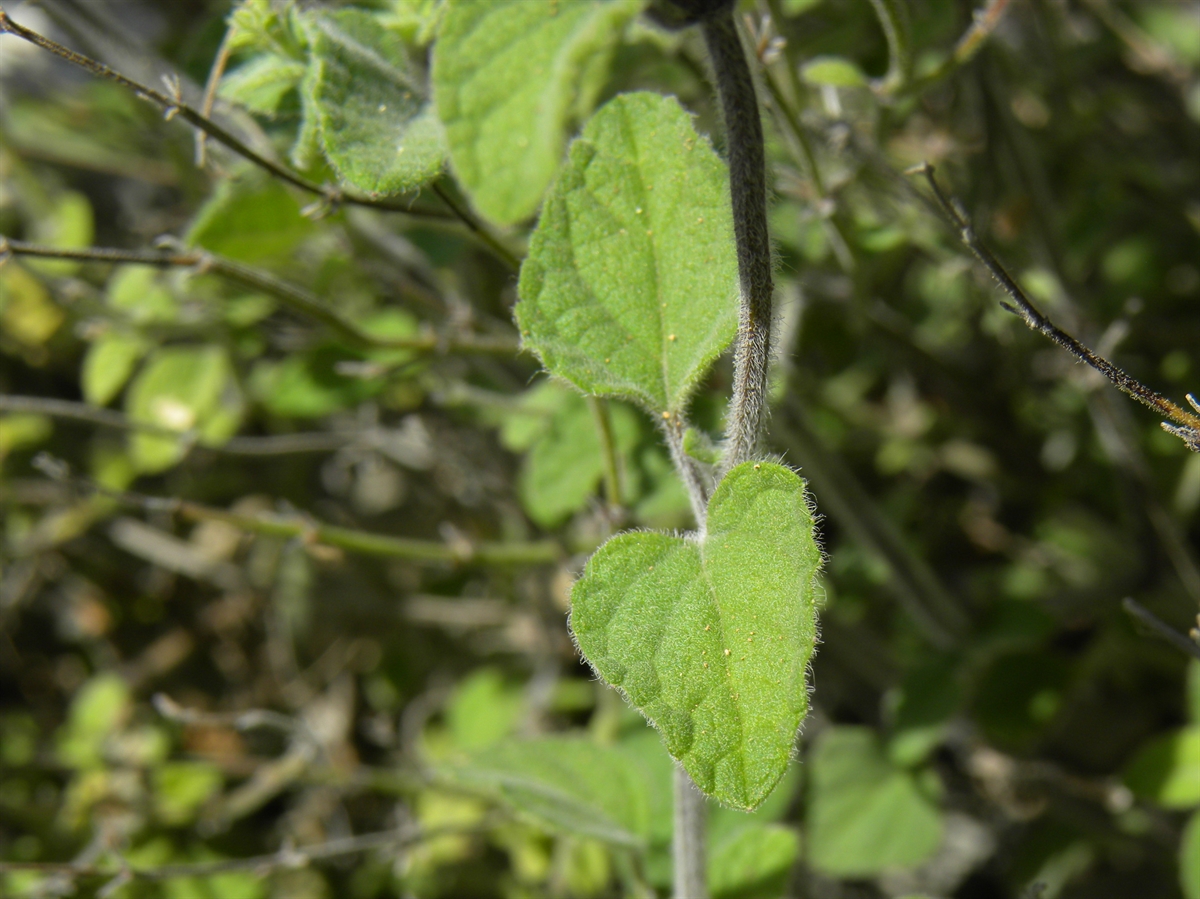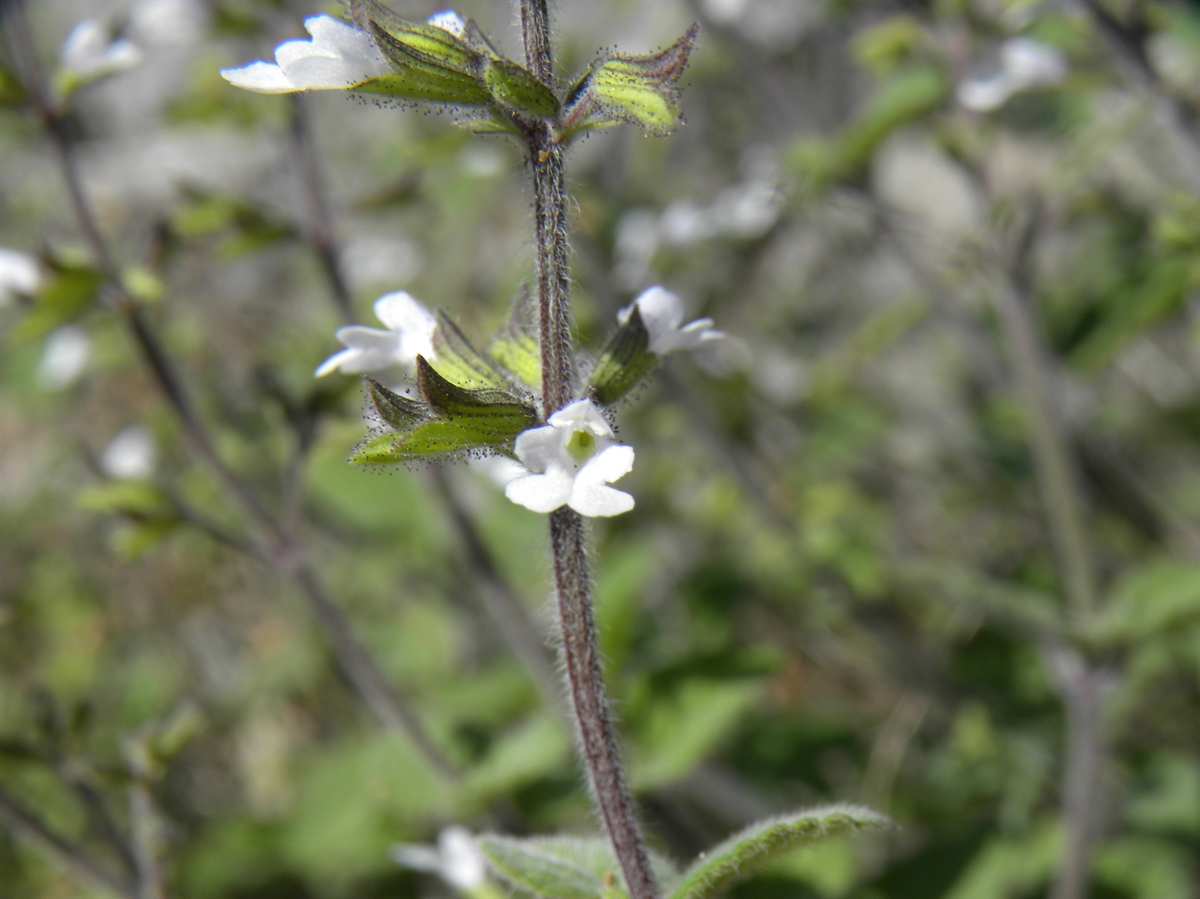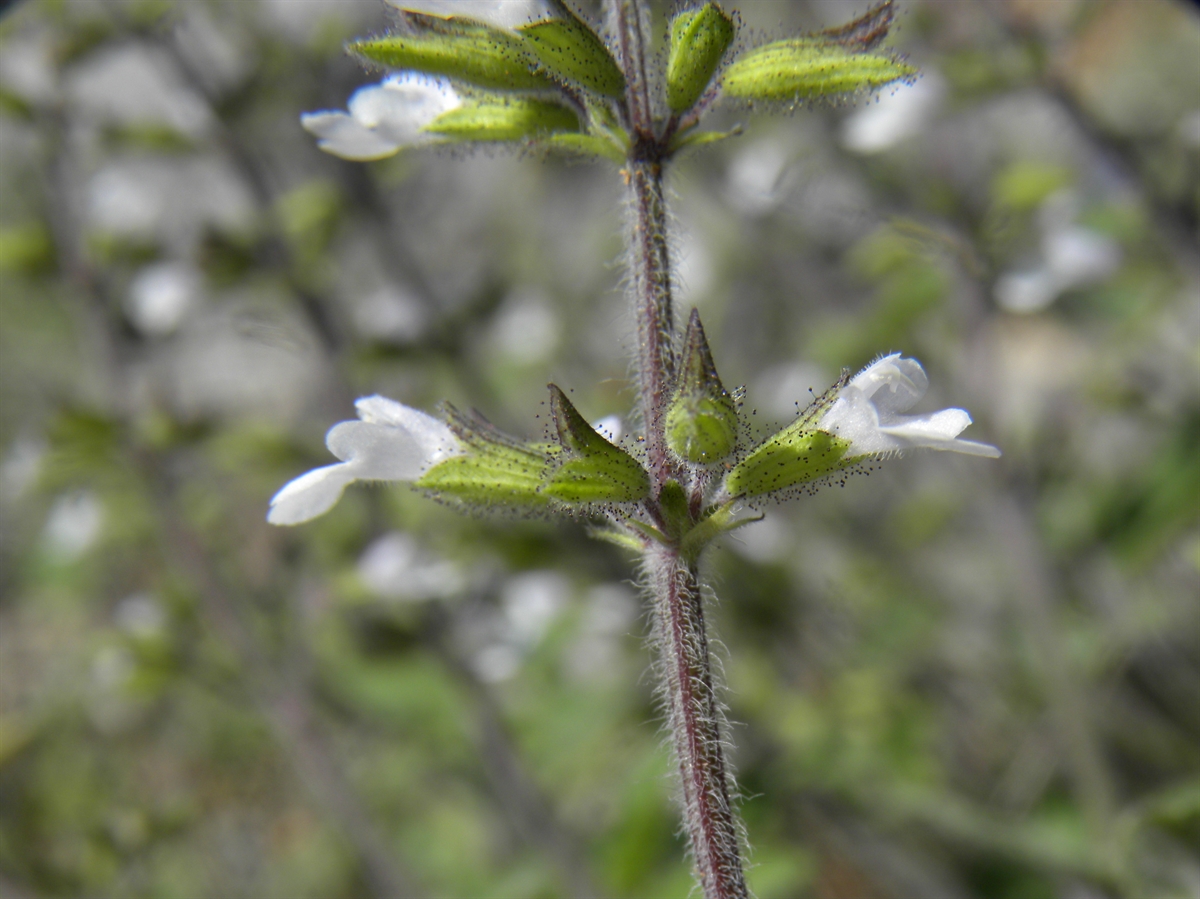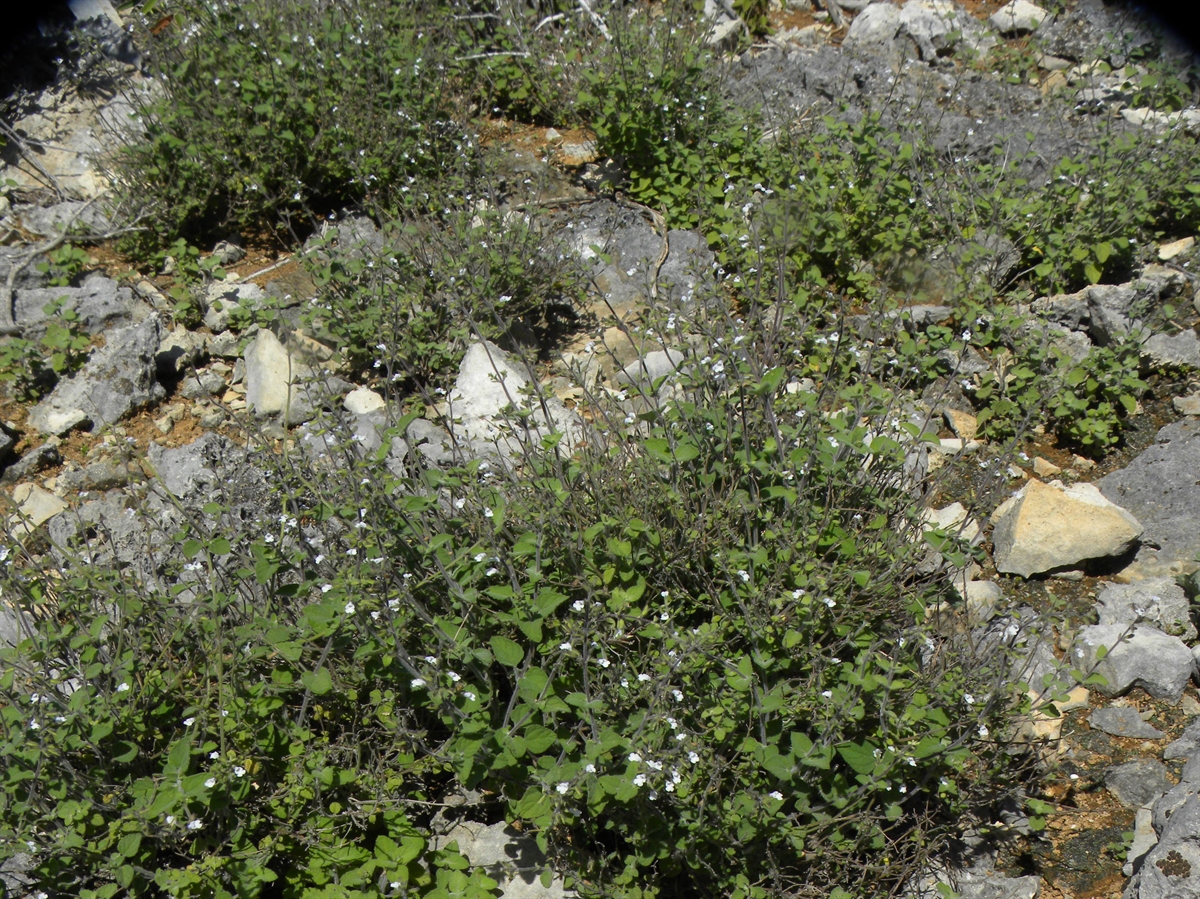Habit: Salvia serotina grows as an herbaceous annual up to 50 cm in height. The leaves are arranged oppositely to 5 cm in length, ovate with a crenate leaf margin and rounded leaf apex. All vegetative material is pubescent.
The complete, perfect, zygomorphic flowers are arranged in racemes. The calyx has 5 fused, greenish sepals forming a tube that is covered with glands. The corolla has 5 fused blue or white petals with 3 lobes below and 2 lobes above. The ovary is superior with 4 locules each with a single seed. The fruit is an aggregate of nutlets.
Habitat: Salvia serotina grows as a naturalized species around homes, abandoned fields and the edges of Dry Broadleaf Evergreen Formations- Forests/Shrublands (coppice).
Distribution: Salvia serotina occurs on all island groupings in the Lucayan Archipelago as well as Florida, the entire Caribbean region and Mexico south to Panama.
Medicinal/Cultural/Economic usage: Salvia serotina is used in the Lucayan Archipelago to treat gastrointestinal problems (loss of appetite, cascading, worms, constipation), obstetrics and gynecology (nausea during pregnancy, afterbirth, pain during periods, to make babies sleep, colic, gripe) colds and fevers (coughs, sinus infections), treating pink eye, and dermatological issues (rashes, cuts and sores, itchiness).
This is a different species than the one that attracts cats (Nepeta cataria).



